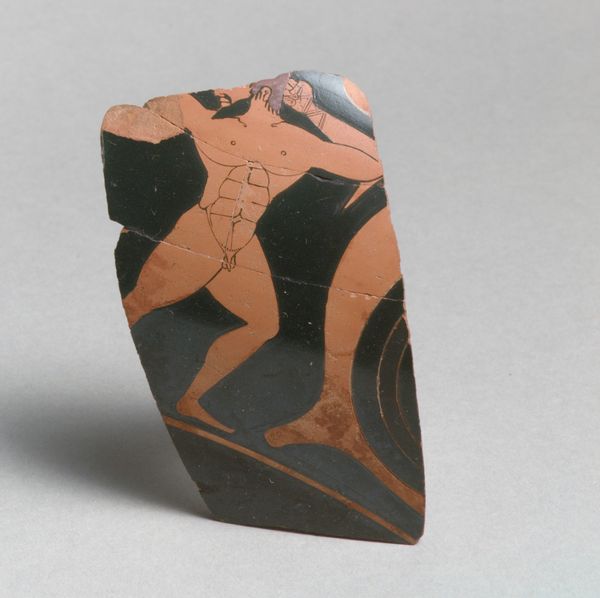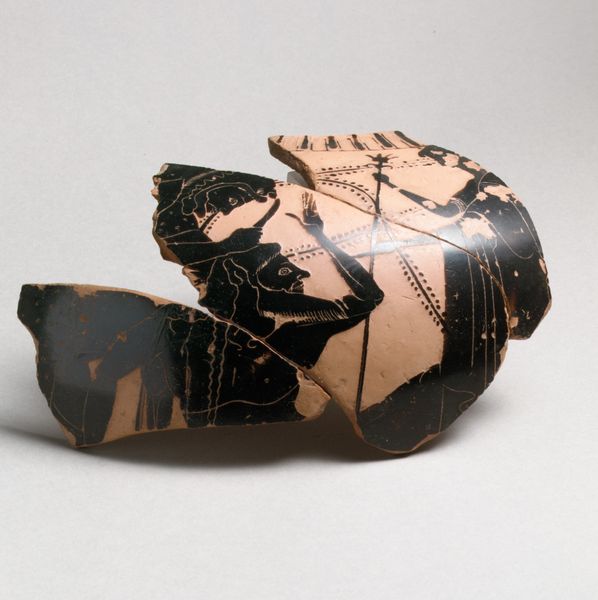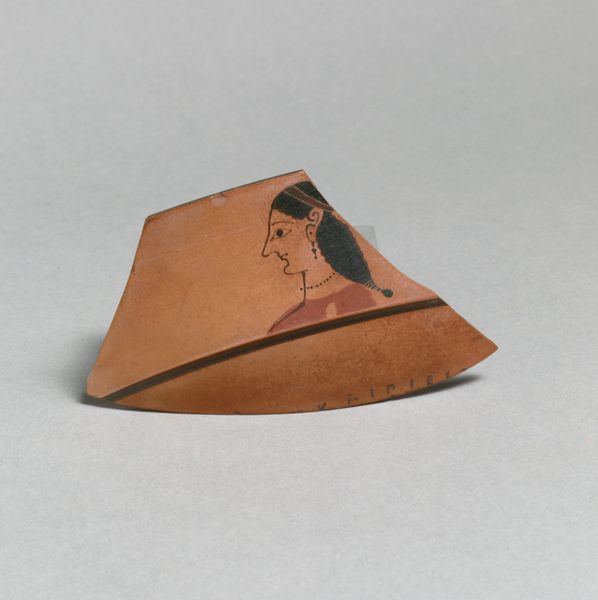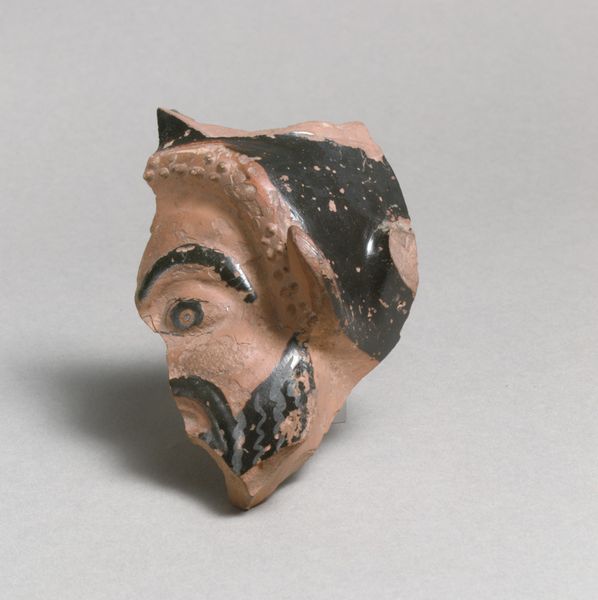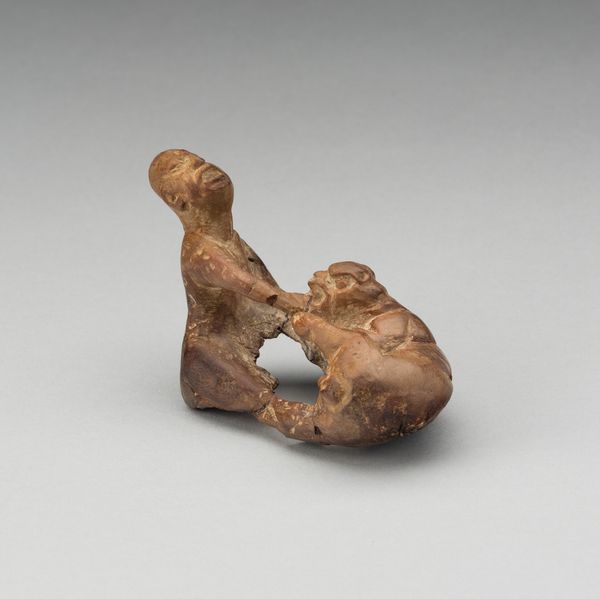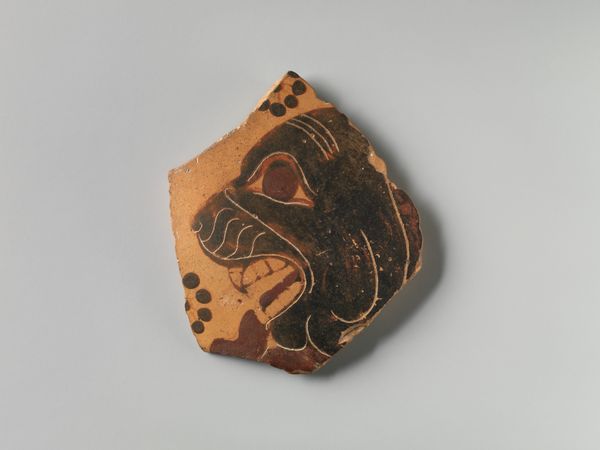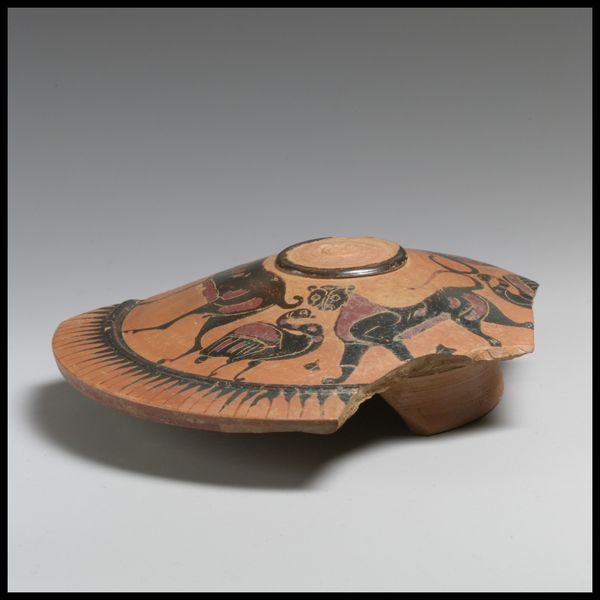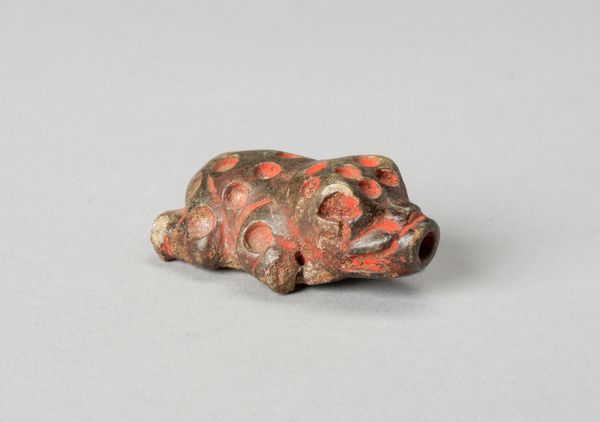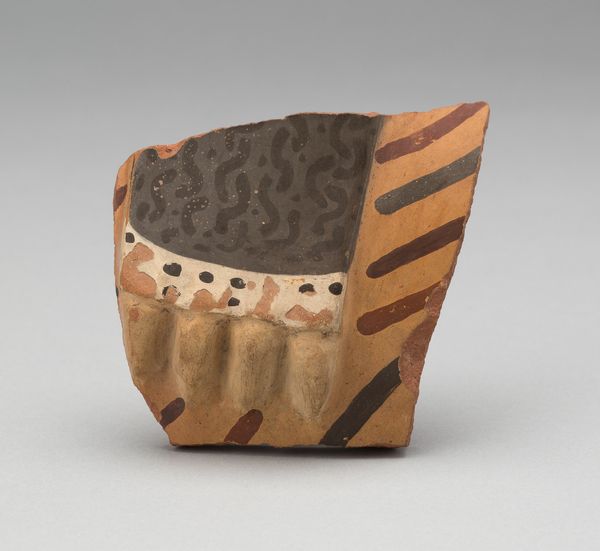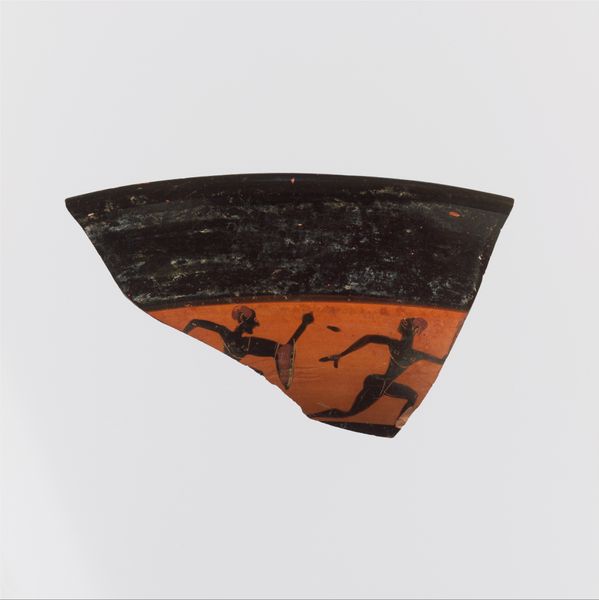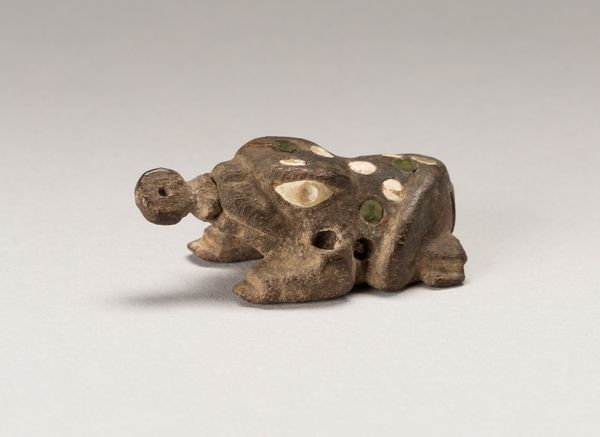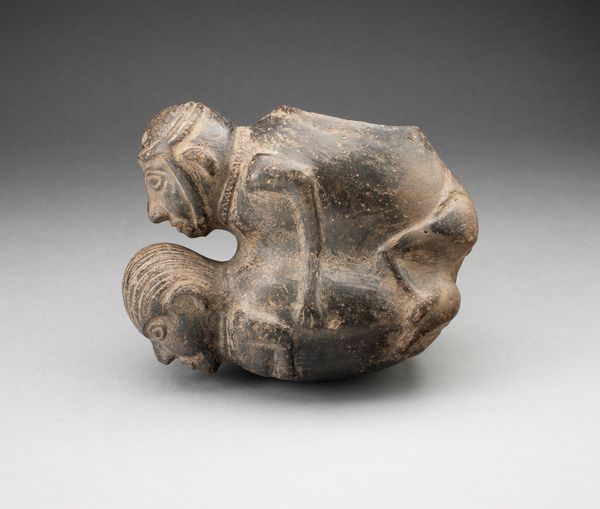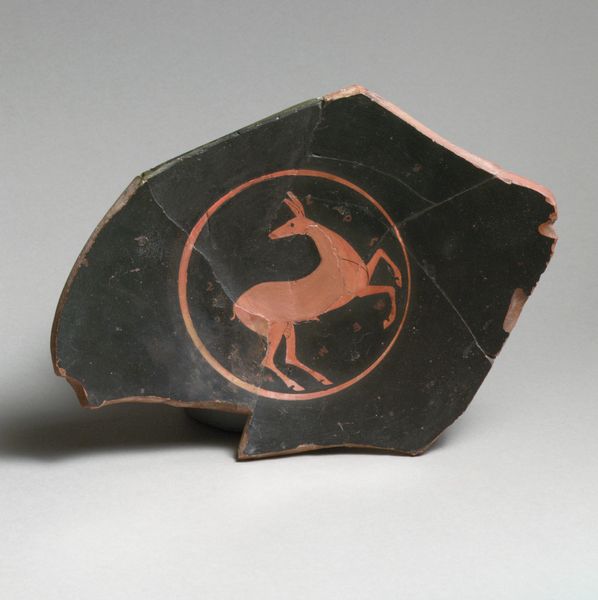
drawing, ceramic, ink
#
drawing
#
greek-and-roman-art
#
ceramic
#
vase
#
figuration
#
roman-art
#
ink
#
ancient-mediterranean
#
history-painting
#
nude
#
male-nude
#
erotic-art
Dimensions: H. 6.91 cm.
Copyright: Public Domain
Editor: So, this fragment of a Rhyton, dating back to 450 BC, showcases a ceramic drawing depicting a nude male figure. The remaining details give me a strong sense of implied motion, but I can't quite place its original context or meaning. How do you interpret this work? Curator: This piece speaks volumes, even in its fragmented state. It invites us to consider the social narratives surrounding the male nude in ancient Greece. While seemingly just a decorative fragment now, this image participated in a broader visual culture that constructed and reinforced ideals of masculinity. Editor: So, the depiction is more than just an artistic choice; it reflects something deeper? Curator: Precisely. We have to think about who this was made for. How might its original viewers have understood this image? The male nude in Greek art often symbolized power, athleticism, and civic duty. Considering feminist theory, however, we might also question the power dynamics inherent in the male gaze perpetuated through such images. Editor: That’s a perspective I hadn’t considered. How much of our modern interpretation might differ from its original intent? Curator: Significantly. While we can appreciate the artistry and skill, we must also acknowledge the complex layers of meaning shaped by social norms and power structures of that time, structures that privileged certain bodies and voices over others. Do you notice how the black-figure style emphasizes the contour of the figure? What impact does that have on the narrative? Editor: Now that you point it out, I see the stark contrast and the outline emphasizes a stylized and maybe idealized body form. It directs attention in a particular way... Curator: Exactly. And considering its likely ritual use – rhytons were often used in drinking rituals – how might this image have functioned in relation to those ceremonies and their associated societal meanings? Editor: It's fascinating how a small fragment can reveal so much about history and social dynamics. Thanks for guiding me! Curator: It's a constant dialogue, isn't it? Looking at the past to better understand our present.
Comments
No comments
Be the first to comment and join the conversation on the ultimate creative platform.
